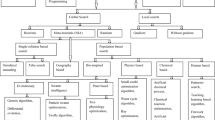Abstract
This paper describes a parametric study on window frame geometry with the goal of designing frames with very good thermal properties. Four different parametric frame models are introduced, described by a number of variables, such as dimensions of particular parts of the frame and thermal conductivity of the materials. In the first part of the study, a process of sensitivity analysis is conducted to determine which of the parameters describing the frame have the highest impact on its thermal performance. Afterwards, an optimization process is conducted on each frame. An attempt is made to optimize the design with regard to three objectives: minimizing the heat flow through the frame, maximizing the net energy gain factor and minimizing the material use. Since the objectives contradict each other, it was found that it is not possible to find a single solution that satisfies all of them. Instead, a range of semi-optimal solutions can be identified, from which the designer can select, according to their needs. A genetic algorithm was successfully used to address this problem. In the final part of the study, detailed simulations of energy use in a building are conducted to validate the results based on simplified, static simulations.
Similar content being viewed by others
Abbreviations
- A :
-
area (mm2)
- b :
-
height of the cavity (m)
- C 1 :
-
coefficient (W/(m·K))
- C 2 :
-
coefficient (W/(m2·K4/3))
- C 4 :
-
coefficient (W/(m2·K))
- D :
-
coefficient for heat loss (kKh)
- d :
-
width of the cavity (m)
- E :
-
net energy gain factor (kWh/(m2·year))
- F i(x):
-
objective functions
- FRP:
-
fiberglass reinforced polymer
- g :
-
solar heat gain coefficient
- h :
-
heat transfer coefficient (W/(m2·K))
- I :
-
coefficient for heat gain (kWh/m2)
- L 2D :
-
two-dimensional thermal conductance (W/(m·K))
- l ψ :
-
perimeter of the glazing (m)
- Q :
-
energy consumption of a building per square meter of floor area (kWh/m2)
- U :
-
thermal transmittance (W/(m2·K))
- α :
-
solar absorptivity of the outer frame surface
- ΔT :
-
temperature difference between the cavity walls (K)
- λ :
-
thermal conductivity (W/(m·K))
- ψ :
-
linear thermal transmittance (W/(m·K))
- a:
-
convective
- eq:
-
equivalent
- ex:
-
external
- f:
-
frame
- g:
-
glazing
- r:
-
radiative
- s:
-
surface
- w:
-
window
References
Appelfeld D, Hansen CS, Svendsen S (2010). Development of a slim window frame made of glass fibre reinforced polyester. Energy and Buildings, 42: 1918–1925.
COMSOL AB (2010a). COMSOL Multiphysics, Version 4.0a.
COMSOL AB (2010b). Livelink for MATLAB.
Danish Building Research Institute (2012). SBi-BSim, Version 6.11.1.14.
Danish Ministry of Economic and Business Affairs. (2010). The Danish Building Code.
Deb K, Pratap A, Agarwal S, Meyarivan T (2002). A fast elitist multi-objective genetic algorithm: NSGA-II. IEEE Transactions on Evolutionary Computation, 6: 182–197.
Duer K, Svendsen S, Moller Mogensen M, Birck Laustsen J (2002). Energy labelling of glazings and windows in Denmark: Calculated and measured values. Solar Energy, 73: 23–31.
Duffie JA, Beckman WA (2006). Solar Engineering of Thermal Processes, 3rd edn. Hoboken, NJ, USA: John Wiley & Sons.
European Committee for Standardization (2012). EN ISO 10077-2:2012. Thermal Performance of Windows, Doors and Shutters—Calculation of Thermal Transmittance, Part 2: Numerical method for frames.
Giglioli N, Saltelli A (2000). SimLab 1.1, software for sensitivity and uncertainty analysis, tool for sound modelling. CoRR cs.DM/0011031.
Gustavsen A, Grynninga S, Arasteh D, Jelle BP, Goudey H (2011). Key elements of and material performance targets for highly insulating window frames. Energy and Buildings, 43: 2583–2594.
Ift Rosenheim (2012). Saving + Gaining Energy with Windows, Facades and Glazing—“EnergyPlus”.
International Organization for Standardization (2003). ISO 15099:2003, Thermal Performance of Windows, Doors and Shading Devices—Detailed Calculations.
Jensen JM, Lund H (1995). Design Reference Year, DRY—et nyt dansk reference år. Department of Buildings and Energy, Technical University of Denmark.
Laustsen J, Svendsen S (2005). Improved windows for cold climates. In: Proceedings of 7th Symposium on Building Physics in the Nordic Countries, Reykjavik, Iceland, pp. 987–994.
Lawrence Berkeley National Laboratory (2010). Therm, Version 6.3. Berkeley, USA.
Marler RT, Arora JS (2004). Survey of multi-objective optimization methods for engineering. Structural and Multidisciplinary Optimization, 26: 369–395.
Mathworks (2012). MATLAB, Version R2012b.
Morris MD (1991). Factorial sampling plans for preliminary computational experiments. Technometrics, 33: 161–174.
Nielsen TR, Duer K, Svendsen S (2000). Energy performance of glazings and windows. Solar Energy, 69(Supplement): 137–143.
PassivHaus Institut (2012). Certification criteria for certified passive house glazings and transparent components.
Sommer Informatik GmbH (2012). WinIso2D Simulation Program, Version 7.40.
Svendsen S, Laustsen J, Kragh J (2005). Linear thermal transmittance of the assembly of the glazing and the frame in windows. In: Proceedings of 7th Symposium on Building Physics in the Nordic Countries, Reykjavik, Iceland, pp. 995–1002.
Author information
Authors and Affiliations
Corresponding author
Rights and permissions
About this article
Cite this article
Zajas, J., Heiselberg, P. Parametric study and multi objective optimization of window frame geometry. Build. Simul. 7, 579–593 (2014). https://doi.org/10.1007/s12273-014-0186-3
Received:
Revised:
Accepted:
Published:
Issue Date:
DOI: https://doi.org/10.1007/s12273-014-0186-3




